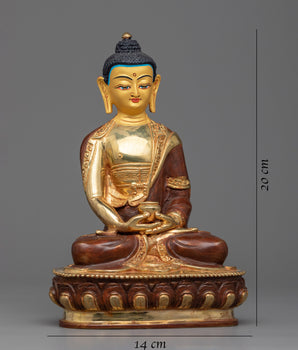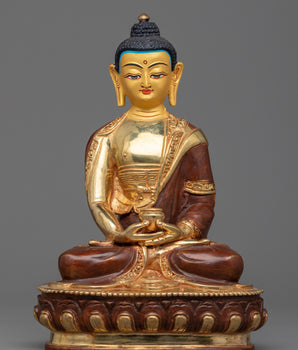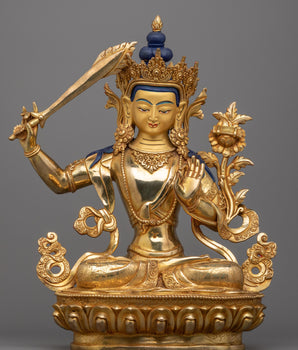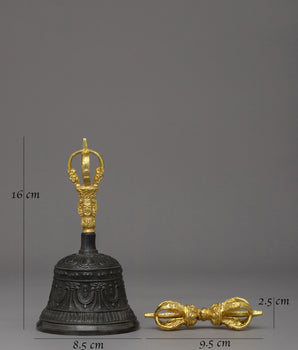










Tibetan Meditating Lord Padmasambhava Art | Buddha of Spiritual Enlightenment

100% AUTHENTIC

HANDMADE

FREE SHIPPING
Handmade Tibetan Meditating Lord Padmasambhava Art for Decor
-------------------------------------------
Size: 8.9”/22.5cm (Height) x 6.3”/16cm (Base)
Weight: 1.58 kg
Material: 24K Gold Gilded, Gold & Acrylic Paintings, Copper Body
-------------------------------------------
About Our Statue :
The Tibetan Meditating Lord Padmasambhava Art, also known as Padmasambhava, the founder of Tibetan Buddhism, represents enlightenment, compassion, and spiritual mastery. This handcrafted statue is 8.9" (Height) x 6.3" (Base) and weighs 1.58 kg. It is made of solid copper, adorned with 24K gold gilding, and enhanced with detailed gold and acrylic paints. Created by expert Nepalese artisans, it represents the holy traditions of Himalayan Buddhism, making it an appealing addition to altars, meditation spaces, or sacred collections.
Guru Rinpoche is depicted sitting in a regal posture, exuding confidence and spiritual mastery. His right hand holds a vajra, which represents indestructible power, while his left hand holds a skull cup (kapala) filled with the nectar of wisdom. The khatvanga, a trident ornamented with symbolic components reflecting his tantric attainment and the union of wisdom and compassion, rests on his left shoulder.
Guru Rinpoche, also known as Padmasambhava, is one of the most venerated figures in Tibetan Buddhism. Believed to have introduced Buddhism to Tibet in the 8th century, he is regarded as the "Second Buddha." His teachings combine wisdom, compassion, and transformative power, guiding practitioners toward liberation. Guru Rinpoche’s iconography—vajra, skull cup, and trident—symbolizes his mastery over obstacles and his ability to dispel ignorance and negativity. He is invoked as a protector and spiritual guide, offering blessings of insight and enlightenment.
Introduction To Guru Rinpoche :
Guru Rinpoche was an instrumental figure in Tibetan Buddhism. In Tibetan Buddhism, Padmasambhava's teachings are said to have an oral lineage (kama) and a lineage of the hidden treasure texts (termas). He is said to appear in visionary encounters to tertöns, and his form is visualized during guru yoga practice, particularly in the Nyingma school. He is revered by Buddhists in Tibet, Nepal, Bhutan, India's Himalayan states, and other countries worldwide.
How do you take care of your statues?
• Place them at room temperature, avoiding direct sunlight.
• Make sure that the area where your statue is placed is entirely free of moisture and dust.
• Place it at the highest place on your altar after being consecrated by the Lama/monks. The best practice is to keep them covered inside a glass cabinet.
• Do not use your bare hands or any objects with a rough surface to wipe the face. Directly touching objects with the bare hand can smudge the face, leaving scratches.





















